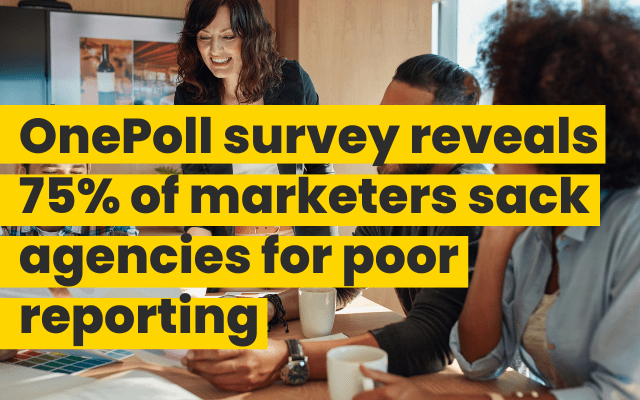What are the new changes to expect?
After their initial announcement with plans to remove third-party cookies, Google declared on Monday 22ndJuly 2024, in a blog post, that they plan to keep third-party cookies running and don’t plan to disable them from Chrome. However, Google have announced a decision to enhance a user’s privacy in relation to preserving advertising effectiveness. Google has offered a new solution, a one-time prompt which enables users to set their preferences that will apply to all Google browsing experiences.
Anthony Chavez, Vice president of Privacy Sandbox wrote in a blog post “We are proposing an updated approach that elevates user choice” Chavez continued to say, “instead of deprecating third-party cookies, we would introduce a new experience in Chrome that lets people make an informed choice that applies across their web browsing, and they’d be able to adjust that choice at any time.”
Google’s timeline explained.
Just months prior to the announcement, Google began to disable third party cookies for 1% of Chrome users globally, as their original promise to users was to balance user privacy with advertisers demands. In January 2020, Chrome issued a statement to phase out the technology within two years. Google has subsequently pushed back their timeline on this change twice, with their most recent pushback being April 2024, due to concerns about Google’s Privacy Sandbox (the company’s suite of proposed cookie alternatives).
It’s clear that the ad industry is not prepared for such a change, with the decision to introduce a new user experience instead of removing third-party cookies. Google has released a statement claiming that this change came after much consideration of feedback from a wide variety of stakeholders, publishers, web developers and standards groups as well as participants in the advertising industry.
There is evidence that regulators, in particularly, led the decision to keep third-party cookies after the UK’s antitrust enforcer, the CMA, flagged 39 unique concerns about Google’s Privacy Sandbox. Outside of the CMA’s concerns, further research shows evidence that Google’s Privacy Sandbox terms may violate privacy laws.
Chavez claims that Google will continue to work with the CMA and other regulatory bodies to improve their Privacy Sandbox and new privacy prompts. “We’re discussing this new path with regulators and will engage with the industry as we roll this out”.
What does this mean going forward?
The IAB Tech Lab, a nonprofit digital advertising consortium, released a in-dept 106-page gap analysis that indicated the transitioning from third-party cookies to Google’s Privacy Sandbox would hinder most current forms of digital advertising across Google Chrome. According to the gap analysis, only a fraction of the 44 basic digital advertising use cases reviewed would be remain usable with the APIs provided by Sandbox. Other major industry leader have raised their concerns, after two months of testing, adtech firm Criteo stated that Google’s Privacy Sandbox would erase publisher’s ad revenues by 60%.
With the new plans to expand third-party cookie user controls in Chrome, Google is claiming that ad performance will remain strong. Google says that recent tests conducted by Google Ads have suggested that Google Privacy Sandbox APIs can deliver strong results. Evidence to support these claims are backed up from experiments run between January and March 2024, ran Privacy Sandbox tools, including APIs saw an 89% recovery of ad spend in Display & Video 360 (DV360). For performance campaigns, focused on conversions, Google says it has recorded a 97% recovery in conversions per dollar for Google Display Ads and a 95% recovery for DV360.
Remarketing campaigns showed a 55% advertiser spend recovery in Google Ads and 49% in DV360, which is a low recovery rate and can be attributed to remarketing’s alliance on third-party cookies for precise personalisation. Google found that campaigns which combined remarketing with other strategies such as optimised targeting and affinity audiences witnessed better returns.
Further experiments by Google found that publishers could mitigate revenue losses from the removal of third-party cookies by using Privacy Sandbox APIs in a combination with other approaches. “Our latest Privacy Sandbox experiment showed overall progress in driving performance without third-party cookies when using a combination of privacy-preserving signals, with room for continued improvements” a spokesperson for Google said in relation to continuing to improve their technologies.
While third-party cookies are here to stay for the meantime, Google will continue to develop their Privacy Sandbox APIs and will also be debuting new privacy measures to users. Google plans to offer IP address obfuscation in Chromes Incognito mode. Chavez wrote “we expect that overall performance using Privacy Sandbox APIs will improve over time as industry adoption increases”. Chavez continued to say, “at the same time, we recognise this transition requires significant work by many participants and will have an impact on publishers, advertisers and everyone involved in online advertising”.
Google continues to refine their Privacy Sandbox technologies in the coming months, promising improvements for users and advertisers. By embracing these changes advertisers can learn and benefit from the improved APIs when establishing campaigns.




